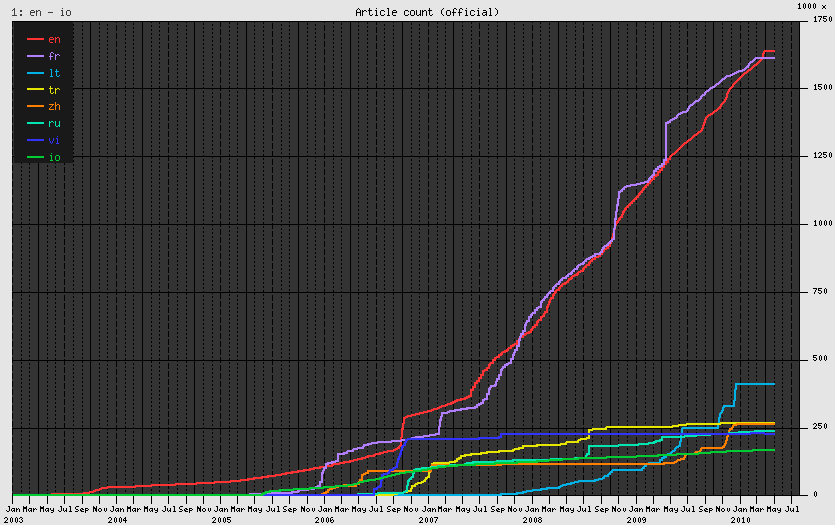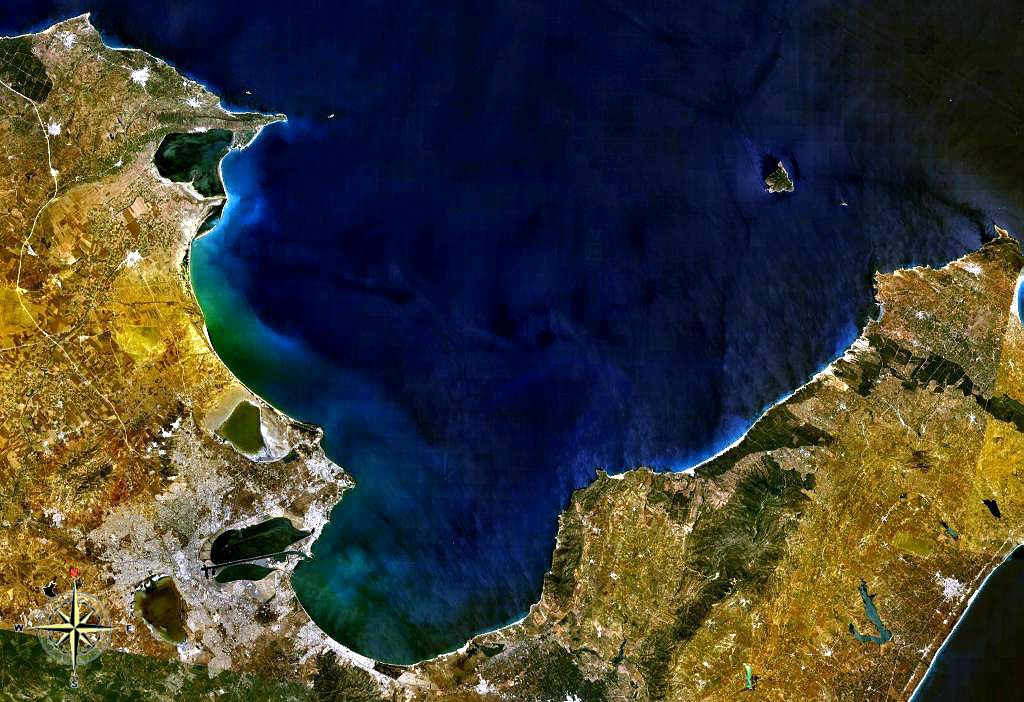|
Yuki–Wappo Languages
The Yuki–Wappo or Yukian languages are a small language family of western California consisting of two distantly related languages, both now extinct. The Yukian languages may be, along with Chumashan and perhaps languages of southern Baja such as Waikuri, one of the oldest language families established in California, before the arrival of speakers of Penutian, Uto-Aztecan, and perhaps even Hokan languages. All three are spoken in areas with long-established populations of a distinct physical type. Family division The family consists of * Yuki–Wappo ** Yuki ** Wappo Yuki consisted of three dialects: Yuki, Coast Yuki, and Huchnom. Wappo consisted of four dialects spoken in the Napa Valley, with a fifth dialect spoken in an enclave on Clear Lake. Wappo and Yuki are quite divergent grammatically and lexically (Goddard 1996: 83), which has led to contested theories about their relationship. Additionally, the Wappo and Yuki people were quite distinct culturally and even ... [...More Info...] [...Related Items...] OR: [Wikipedia] [Google] [Baidu] |
California
California () is a U.S. state, state in the Western United States that lies on the West Coast of the United States, Pacific Coast. It borders Oregon to the north, Nevada and Arizona to the east, and shares Mexico–United States border, an international border with the Mexico, Mexican state of Baja California to the south. With almost 40million residents across an area of , it is the List of states and territories of the United States by population, largest state by population and List of U.S. states and territories by area, third-largest by area. Prior to European colonization of the Americas, European colonization, California was one of the most culturally and linguistically diverse areas in pre-Columbian North America. European exploration in the 16th and 17th centuries led to the colonization by the Spanish Empire. The area became a part of Mexico in 1821, following Mexican War of Independence, its successful war for independence, but Mexican Cession, was ceded to the U ... [...More Info...] [...Related Items...] OR: [Wikipedia] [Google] [Baidu] |
Alexander Valley
The Alexander Valley (Wappo language, Wappo: Unutsawaholmanoma, "Toyon Bush Berry Place") is a Californian (wine), Californian American Viticultural Area (AVA) just north of Healdsburg, California, Healdsburg in Sonoma County (wine), Sonoma County. It is home to many winery, wineries and vineyards, as well as the city of Cloverdale, California, Cloverdale. It is the largest and most fully planted wine region in Sonoma.J. Robinson (ed) ''"The Oxford Companion to Wine"'' Third Edition pg 643 Oxford University Press 2006 U.S. Route 101, Highway 101 runs through the valley, and the Russian River (California), Russian River flows down the valley, surrounded by vineyards on both sides. From the higher elevations of the valley rim, there is a view as far south as Taylor Mountain (Sonoma County, California), Taylor Mountain and Sonoma Mountain. The region was named for Cyrus Alexander, owner of a part of the Rancho Sotoyome Mexican land grant, in 1847. Granted AVA status in 1984, the boun ... [...More Info...] [...Related Items...] OR: [Wikipedia] [Google] [Baidu] |
Wiktionary
Wiktionary (, ; , ; rhyming with "dictionary") is a multilingual, web-based project to create a free content dictionary of terms (including words, phrases, proverbs, linguistic reconstructions, etc.) in all natural languages and in a number of artificial languages. These entries may contain definitions, images for illustration, pronunciations, etymologies, inflections, usage examples, quotations, related terms, and translations of terms into other languages, among other features. It is collaboratively edited via a wiki. Its name is a portmanteau of the words ''wiki'' and ''dictionary''. It is available in languages and in Simple English. Like its sister project Wikipedia, Wiktionary is run by the Wikimedia Foundation, and is written collaboratively by volunteers, dubbed "Wiktionarians". Its wiki software, MediaWiki, allows almost anyone with access to the website to create and edit entries. Because Wiktionary is not limited by print space considerations, most of Wiktiona ... [...More Info...] [...Related Items...] OR: [Wikipedia] [Google] [Baidu] |
Chitimacha
The Chitimacha ( ; or ) are an Indigenous people of the Southeastern Woodlands in Louisiana. They are a federally recognized tribe, the Chitimacha Tribe of Louisiana. The Chitimacha have an Indian reservation in St. Mary Parish near Charenton on Bayou Teche. Their reservation is a small part of their precontact territory. They are the only Louisiana tribe who still control some of their original land, where they have long occupied areas of the Atchafalaya Basin, "one of the richest inland estuaries on the continent."''NATIVE WATERS: A CHITIMACHA RECOLLECTION'' (1/30/2011) , American Public Television, Louisiana Public Broadcasting; accessed 20 September 2011 In 2011 they numbered about 1100 people. Historically, the Chitimacha spoke ... [...More Info...] [...Related Items...] OR: [Wikipedia] [Google] [Baidu] |
Coahuiltecan Languages
Coahuiltecan was a proposed language family in John Wesley Powell's 1891 classification of Native American languages. Most linguists now reject the view that the Coahuiltecan peoples of southern Texas and adjacent Mexico spoke a single or related languages. Coahuiltecan continues to be a convenient collective term for the languages and people of this region. Language relationships Similarities among the cultures among the indigenous people and the physical setting of south Texas led linguists to believe that the languages of the region were also similar. The Coahuiltecan language family was proposed to include all the languages of the region, including Karankawa and Tonkawa. Linguistic connections were proposed with Hokan, a language family of several Native American peoples living in California, Arizona, and Baja California. Most modern linguists, by contrast, see the Coahuiltecan region as one of linguistic diversity. A few words are known from seven different languages ... [...More Info...] [...Related Items...] OR: [Wikipedia] [Google] [Baidu] |
Gulf Languages
A gulf is a large inlet from an ocean or their seas into a landmass, larger and typically (though not always) with a narrower opening than a bay. The term was used traditionally for large, highly indented navigable bodies of salt water that are enclosed by the coastline. Many gulfs are major shipping areas, such as the Persian Gulf, Gulf of Mexico, Gulf of Finland, and Gulf of Aden The Gulf of Aden (; ) is a deepwater gulf of the Indian Ocean between Yemen to the north, the Arabian Sea to the east, Djibouti to the west, and the Guardafui Channel, the Socotra Archipelago, Puntland in Somalia and Somaliland to the south. .... See also * References External links * {{Geography-stub Bodies of water Coastal and oceanic landforms Coastal geography Oceanographical terminology ... [...More Info...] [...Related Items...] OR: [Wikipedia] [Google] [Baidu] |
Muskogean
Muskogean ( ; also Muskhogean) is a language family spoken in the Southeastern United States. Members of the family are Indigenous Languages of the Americas. Typologically, Muskogean languages are highly synthetic and agglutinative. One documented language, Apalachee, is no longer spoken, and the remaining languages are critically endangered. Genetic relationships Family division The Muskogean family consists of Alabama, Chickasaw, Choctaw, Muscogee (or Creek), Koasati, Apalachee, and Hitchiti-Mikasuki. Hitchiti is generally considered a dialect of Mikasuki. "Seminole" is sometimes used for a dialect of Muscogee spoken in Oklahoma. The major subdivisions of the family have long been controversial, but the following lower-level groups are universally accepted: Choctaw–Chickasaw, Alabama–Koasati, Hitchiti–Mikasuki, and Muscogee. Apalachee is no longer spoken; its precise relationship to the other languages is uncertain, but Mary Haas and Pamela Munro both classify ... [...More Info...] [...Related Items...] OR: [Wikipedia] [Google] [Baidu] |
Morris Swadesh
Morris Swadesh ( ; January 22, 1909 – July 20, 1967) was an American linguist who specialized in comparative and historical linguistics, and developed his mature career at UNAM in Mexico. Swadesh was born in Massachusetts to Bessarabian Jewish immigrant parents. He completed bachelor's and master's degrees at the University of Chicago, studying under Edward Sapir, and then followed Sapir to Yale University where he completed a Ph.D. in 1933. Swadesh taught at the University of Wisconsin–Madison from 1937 to 1939, and then during World War II worked on projects with the United States Army and Office of Strategic Services. He became a professor at the City College of New York after the war's end, but was fired in 1949 due to his membership in the Communist Party. He spent most of the rest of his life teaching in Mexico and Canada. Swadesh had a particular interest in the indigenous languages of the Americas, and conducted extensive fieldwork throughout North America. He was ... [...More Info...] [...Related Items...] OR: [Wikipedia] [Google] [Baidu] |
Siouan
Siouan ( ), also known as Siouan–Catawban ( ), is a language family of North America located primarily in the Great Plains, Ohio and Mississippi valleys and southeastern North America with a few other languages in the east. Name Authors who call the entire family ''Siouan'' distinguish the two branches as Western Siouan and Eastern Siouan or as "Siouan-proper" and "Catawban". Others restrict the name "Siouan" to the western branch and use the name ''Siouan–Catawban'' for the entire family. Generally, however, the name "Siouan" is used without distinction. Family division The Siouan family consists of some 20 languages and various dialects: * Siouan ** Western Siouan *** Mandan **** Nuptare **** Nuetare *** Missouri River Siouan (a.k.a. Crow–Hidatsa) **** Crow (a.k.a. Absaroka, Apsaroka, Apsaalooke, Upsaroka) – 3,500 speakers **** Hidatsa (a.k.a. Minitari, Minnetaree) – 200 speakers *** Mississippi Valley Siouan (a.k.a. Central Siouan) **** Mitchigamea? **** ... [...More Info...] [...Related Items...] OR: [Wikipedia] [Google] [Baidu] |
Edward Sapir
Edward Sapir (; January 26, 1884 – February 4, 1939) was an American anthropologist-linguistics, linguist, who is widely considered to be one of the most important figures in the development of the discipline of linguistics in the United States. Sapir was born in German Empire, German Pomerania, in what is now northern Poland. His family emigrated to the United States of America when he was a child. He studied Germanic linguistics at Columbia University, Columbia, where he came under the influence of Franz Boas, who inspired him to work on Indigenous languages of the Americas, Native American languages. While finishing his Ph.D. he went to University of California, Berkeley, California to work with Alfred Kroeber documenting the indigenous languages there. He was employed by the Geological Survey of Canada for fifteen years, where he came into his own as one of the most significant linguists in North America, the other being Leonard Bloomfield. He was offered a professorship at ... [...More Info...] [...Related Items...] OR: [Wikipedia] [Google] [Baidu] |
Yokutsan
Yokuts, formerly known as Mariposa, is an endangered language spoken in the interior of Northern and Central California in and around the San Joaquin Valley by the Yokuts people. The speakers of Yokuts were severely affected by disease, missionaries, and the Gold Rush. While descendants of Yokuts speakers currently number in the thousands, all constituent dialects apart from Valley Yokuts are now extinct. The Yawelmani dialect of Valley Yokuts has been a focus of much linguistic research. Dialect The Yokuts language consists of half a dozen primary dialects. An estimated forty linguistically distinct groups existed before Euro-American contact. * Yokuts ** Poso Creek *** Palewyami Yokuts ( Poso Creek, Altinin) ** General Yokuts (all others) *** Buena Vista **** Tulamni **** Hometwali *** Nim **** Tule–Kaweah ***** Wukchumni ***** Yawdanchi ( Nutaa) ***** Bokninuwad **** Northern Yokuts ***** Gashowu ***** Kings River ****** Chukaymina (also spelled ... [...More Info...] [...Related Items...] OR: [Wikipedia] [Google] [Baidu] |




